| A Brief Introduction to Hinduism |
Religious Texts
Unlike other religions, which are usually based on one particular religious text, Hinduism admits myriad texts to its canon. Whereas Judaism focuses on the Torah, Christianity on the Bible, and Islam on the Koran, Hinduism has many different texts, each serving different roles. Here they are presented in, roughly, chronological order.
The Vedas/Samhitas
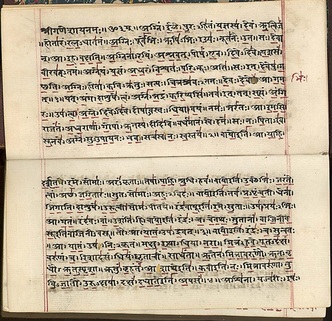
These are the oldest primary texts of Hinduism, though they do not influence current practice as much as they used to. They primarily consist of instructions regarding ritual ceremonies and hymns to the gods. There are four Vedas, and another text that is sometimes considered a Veda.
- Rig Veda: This is the oldest of the Vedas, and dates to about 1500 BCE, though it was not written down until about 300 BCE. Its name means “Wisdom of the Verses.” This Veda contains hymns in praise of the early Sanskrit/Hindu gods, and well as instructions for use in rituals.
- Sâma Veda: This Veda repeats many of the hymns present in the Rig Veda, but it adds musical accompaniment to them. Its name means “Wisdom of the Chants.”
- Yajur Veda: This Veda details rituals in-depth, and adds recitations and incantations to accompany such acts. Its name means “Wisdom of the Sacrificial Formulas.”
- Atharva Veda: Twenty different books of chants and religious commentary compose the final uncontested Veda. "Atharva Veda" means "Wisdom of the Seers." This Veda is different from the others in that its content does not largely deal with priestly matters, but rather with the concerns of everyday life. Magical incantations for both good and evil purposes compose the first eight books. The next four books contain hymns focused on philosophical and cosmological issues. The final eight books consist of magical formulas, and also include practical instruction regarding subjects such as marriage and burials.
- Nâtya Veda: Although not all Hindus consider this a Vedic text, it still forms an important part of Hindu culture. This text, supposedly written by Brahma himself, codifies theatrical and dramatic practice by combining principles found in the other Vedas. Its name, sometimes rendered as Nâtyashastra, means "Wisdom of Dramatic Practice."
The Brahmanas and Aranyakas
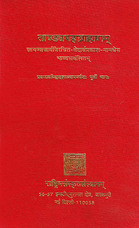
The Brahmanas mark the transition of Hinduism from a practical religion to one focused on high philosophy as well. These texts interpret the rituals and ceremonial aspect of the Vedas, explaining the higher significance of such acts. An important part of the philosophy of the Brahmanas is that sacrifice is central to all aspects of the universe.
The Aranyakas are similar to the Brahmanas, but contain information on rituals unsuitable for village life—thus the name, which means “Forest Books.”
The Aranyakas are similar to the Brahmanas, but contain information on rituals unsuitable for village life—thus the name, which means “Forest Books.”
The Upanishads
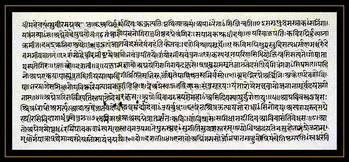
The title of these books means “Sittings Near a Teacher.” Written between 800 and 400 BCE, these texts are the first to include and introduce familiar elements of Hindu cosmology, such as karma, yoga, meditation, self-realization, and reincarnation. These texts foreshadow the idea of Jnana yoga, as they focus on the goal of moksha as accomplished through knowledge of the illusion of the sensory world. There are many, many Upanishads.
The Puranas
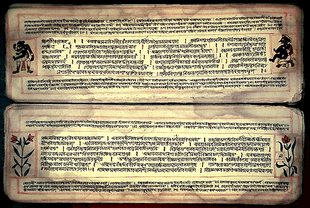
These works are historical in nature; they describe the complete history of the cosmos, from Brahma’s creative act to Shiva’s destruction. Each of the 20 or so Puranas is named after a deity.
Of these, the Bhagawatam (or Bhagavad Purana) is still particularly relevant to the ISKCON, as it tells the stories of the avatars of Vishnu.
Of these, the Bhagawatam (or Bhagavad Purana) is still particularly relevant to the ISKCON, as it tells the stories of the avatars of Vishnu.
The Epics
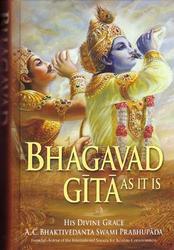
By far the most popular (and readable) Hindu texts, the Epics are the stories of the gods. There are two epics, both written in the form of poems.
- The Mâha-bharâtâ tells the story of the Bhâratas, a Vedic tribe. It was written between 540 to 300 BCE.
- The Bhagavad Gita, though not an Epic in its own right, is probably the most popular Hindu text today. The Gita, as it is sometimes called, is part of the longer Mâha-bharâtâ Epic. The text itself consists of a talk between Vishnu’s avatar Krishna and a Kshatriya, Arjuna. Arjuna wonders why he must fight his brothers in a civil war between Aryan tribes, and Krishna and he begin to talk about dharma, karma, and moksha. The Gita integrates many strands of Hindu philosophy, and stands as one of Hinduism’s defining texts still today.
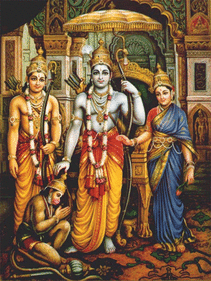
- The Ramayana, the second true Epic, tells the story of the banishment of Rama, an avatar of Vishnu, from the country of Koysala. As the eldest son of King Dasaratha, Rama is entitled to the throne after his father’s death, but one of the queens wishes her son to become ruler. To accomplish this, she arranges for Rama to be banished from the kingdom. Rama, his wife Sita, and his brother accept his exile, starting a life in the forest. But when Sita is kidnapped by the demon Ravana, Rama begins a quest to recover her that turns into a full-scale battle. After recovering her with the aid of the monkey god Hanuman, Rama returns home and is finally crowned king.
This is by no means a comprehensive list of all Hindu religious texts! Modern texts continue to explore ideas presented in these earlier canonical works, and so are also said to be religious texts. In Hinduism, the line between a religious work and a commentary on a religious work is blurry, so the meaning of a sacred text is constantly changing.
If you are interested in reading any of the above-mentioned works, the Sacred Texts Archive provides free translations of many of the works into English. It’s easy to be overwhelmed by the sheer number of texts, but the Bhagavad Gita is perhaps the best place to start, as it is said to distill the essence of Hinduism.
If you are interested in reading any of the above-mentioned works, the Sacred Texts Archive provides free translations of many of the works into English. It’s easy to be overwhelmed by the sheer number of texts, but the Bhagavad Gita is perhaps the best place to start, as it is said to distill the essence of Hinduism.
Sources:
"Vedas and Natya." The Narasimha Academy of Arts. N.p., n.d. Web. 3 Dec. 2011.
http://www.sacred-texts.com/hin/
http://hinduism.about.com/cs/vedasvedanta/a/aa120103a.htm
http://harekrishnaargentina.blogspot.com/2011/04/los-cuatro-vedas-por-jayadhvaja-das.html
http://www.exoticindiaart.com/book/details/tandya-maha-brahmana-with-commentary-of-sayana-sanskrit-only-in-two-volumes-NAB837/
http://www.harekrsna.com/philosophy/gss/sastra/vedas/upanisads.htm
http://www.harekrsna.com/philosophy/gss/sastra/vedas/puranas.htm
http://www.iskcondesiretree.net/page/advent-of-srimad-bhagavadgita
http://www.stateofkerala.in/news/Relevance%20of%20Ramayana%20Month.php
"Vedas and Natya." The Narasimha Academy of Arts. N.p., n.d. Web. 3 Dec. 2011.
http://www.sacred-texts.com/hin/
http://hinduism.about.com/cs/vedasvedanta/a/aa120103a.htm
http://harekrishnaargentina.blogspot.com/2011/04/los-cuatro-vedas-por-jayadhvaja-das.html
http://www.exoticindiaart.com/book/details/tandya-maha-brahmana-with-commentary-of-sayana-sanskrit-only-in-two-volumes-NAB837/
http://www.harekrsna.com/philosophy/gss/sastra/vedas/upanisads.htm
http://www.harekrsna.com/philosophy/gss/sastra/vedas/puranas.htm
http://www.iskcondesiretree.net/page/advent-of-srimad-bhagavadgita
http://www.stateofkerala.in/news/Relevance%20of%20Ramayana%20Month.php
